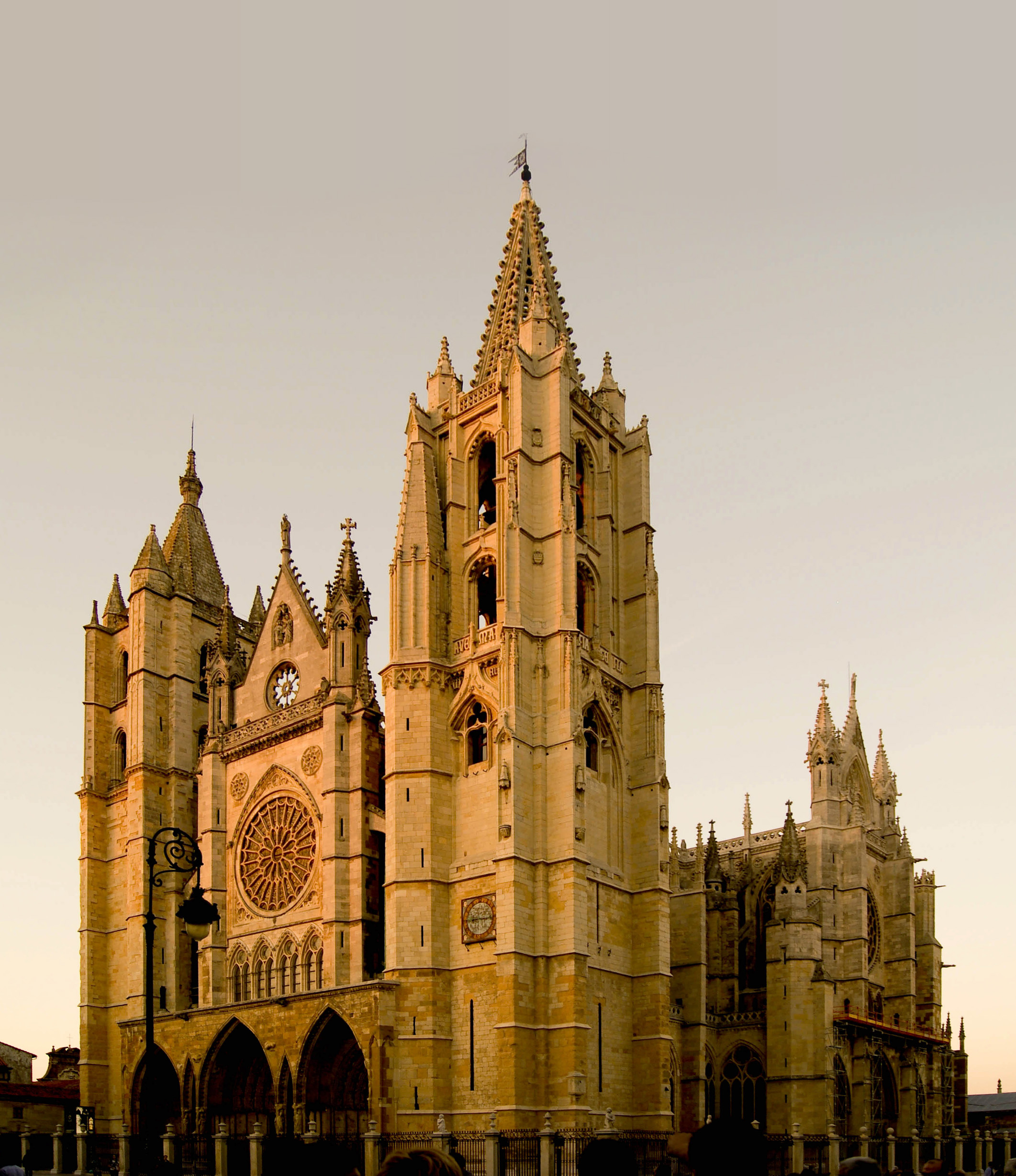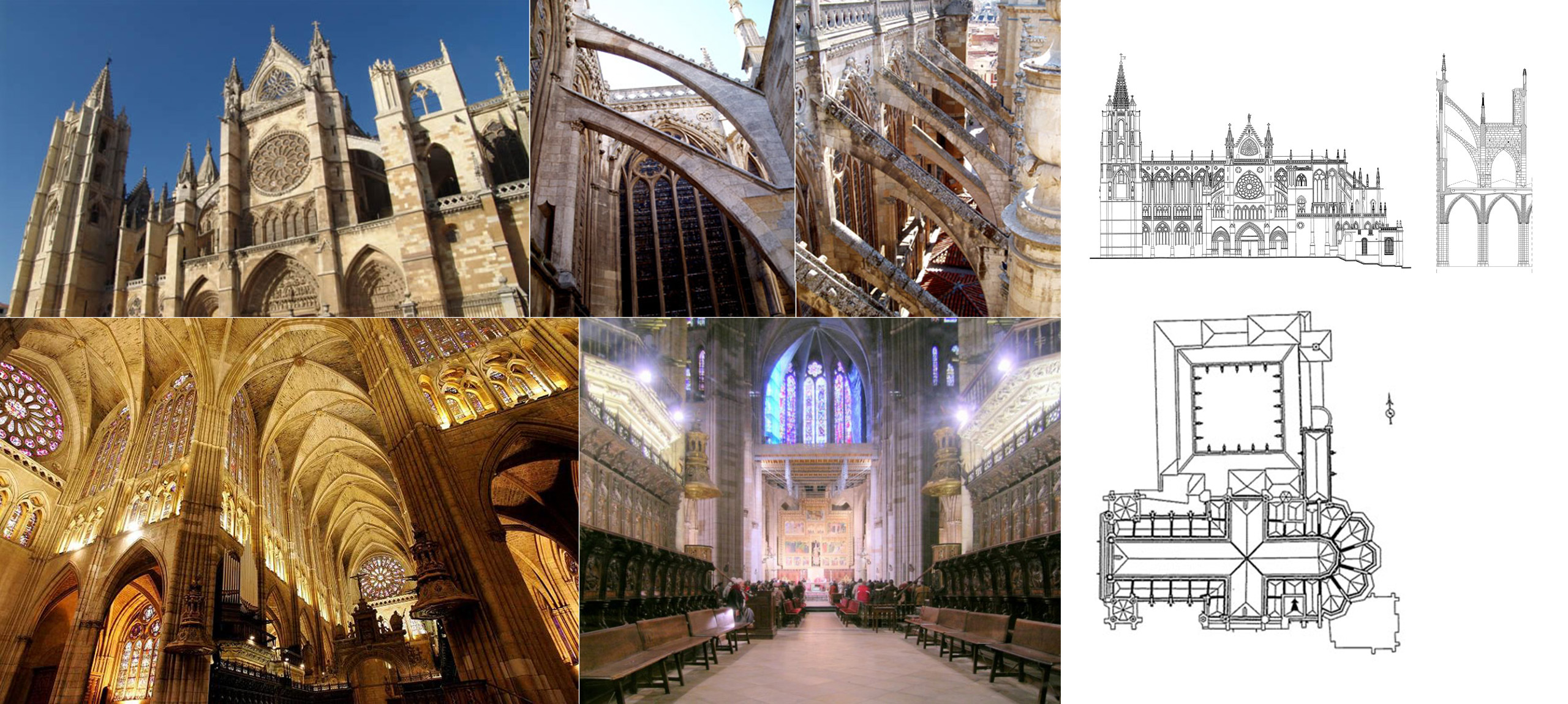
| Study of the ‘Silla de la Reina” tower at Leon Cathedral | |
| León, Spain | |
| Structural typology | Rehabilitation Of Buildings |
| Date | July, 2012 |
| Scope | Auscultation and diagnosis |
| Architect | Maître Enrique |
| Owner | Ministerio de Educación y Cultura |
The Silla de la Reina Tower pertaining to the Cathedral of León is a structural element which was conceived in the 13th century with the purpose to solve the crossing of the thrusts of the main nave with those of the transept on the south eastern side. In 1999 this element showed deterioration and defects which were important to evaluate, given the history of collapse on this side of the Cathedral during the 18th and 19th centuries.
With this aim, a study of the resistance behaviour, comprising structural monitoring was initiated, in order to measure acting loads (wind), mechanical properties of the masonry and the evolution of strains.
This study, which lasted a period of three years, allowed the obtaining of very interesting information regarding the wind loads, the evolution of the thermohygrometrical conditions of the stone both on the surface and on the inside, together with the movements of strategically chosen points, after a previously conducted parametrical study.
The study was fulfilled parallel to a number of therapeutical actions (re-pointing, cleaning up, roof repair works, etc) and has allowed the testing of the effectiveness of the applied therapy over these three years.
In short, this is another example of the way the process of: anamnesis, analysis, diagnosis, therapy and prognosis is the best global strategy to attack problems affecting our historical heritage.
With this aim, a study of the resistance behaviour, comprising structural monitoring was initiated, in order to measure acting loads (wind), mechanical properties of the masonry and the evolution of strains.
This study, which lasted a period of three years, allowed the obtaining of very interesting information regarding the wind loads, the evolution of the thermohygrometrical conditions of the stone both on the surface and on the inside, together with the movements of strategically chosen points, after a previously conducted parametrical study.
The study was fulfilled parallel to a number of therapeutical actions (re-pointing, cleaning up, roof repair works, etc) and has allowed the testing of the effectiveness of the applied therapy over these three years.
In short, this is another example of the way the process of: anamnesis, analysis, diagnosis, therapy and prognosis is the best global strategy to attack problems affecting our historical heritage.






